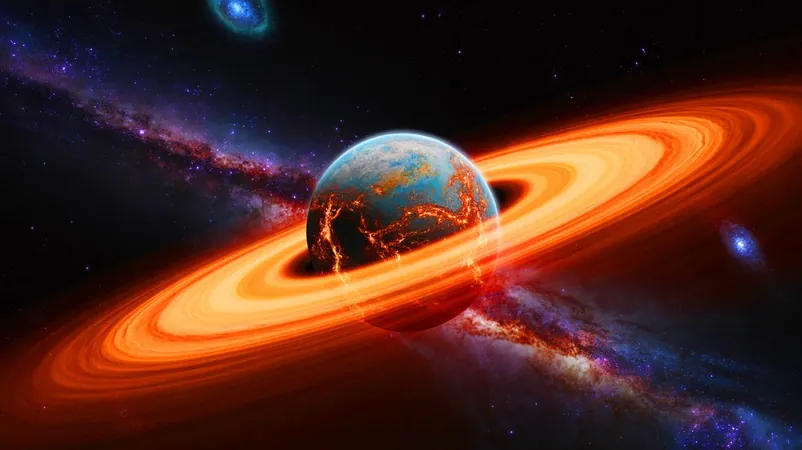
Witnessing the Cosmos: First-Ever Capture of Planet Birth Creates Excitement Among Astronomers
2025-09-17
Author: Ling
A Historic Moment in Astronomy
In an unprecedented breakthrough, scientists have made the astonishing discovery of a planet being born live in the depths of space! Situated nearly 400 light-years away, this colossal gas giant—five times larger than Jupiter—is emerging from a swirling cloud of cosmic dust and gas. This groundbreaking finding, detailed in the Astrophysical Journal Letters, provides invaluable insights into planetary formation, revolutionizing our understanding of the universe.
The Young Star That Set the Stage
An international team of astronomers trained their telescopes on WISPIT 2, a young star similar to our Sun and just 5 million years old. This star, located in a region rich with potential for planetary creation, is surrounded by a protoplanetary disk—a ring of gas and dust believed to be the cradle of planets. Over two years, researchers have meticulously monitored this disk, unraveling secrets of its dynamic formation.
A Cosmic Discovery Through Clear Imaging
Using the powerful Very Large Telescope in Chile, astronomers captured striking images revealing a gap within the disk. This gap signifies the growing planet's gravitational influence as it carves out its path among the surrounding materials. The clarity of this observation is a monumental achievement, as capturing such phenomena is notoriously complex. This rare glimpse into the early stages of a planet’s development lays the groundwork for future cosmic research.
Difficulties in Capturing the Cosmic Newborn
The birth of WISPIT 2b, the newly discovered planet, required advanced technology and ideal observational conditions. The Large Binocular Telescope in Arizona also contributed, imaging the formation of this gas giant as it continues to grow by accumulating material from its environment. Detecting planets like WISPIT 2b amidst dense debris fields presents significant challenges for astronomers.
WISPIT 2b: A New Planet on the Cosmic Scene
Nestled approximately 60 astronomical units from WISPIT 2—roughly the distance of our Solar System’s Kuiper Belt—WISPIT 2b’s formation remains an ongoing spectacle for scientists to observe. Unlike Jupiter, which orbits relatively close to the Sun, WISPIT 2b’s more distant location offers unique research opportunities and challenges as the planet continues its creation process.
Broader Implications for Science and Philosophy
This remarkable observation transcends a single scientific milestone, propelling us closer to comprehending our place within the vast universe. The discovery prompts a reevaluation of existing planetary formation models, presenting a tangible opportunity to test hypotheses about the origins of planets—including those in our Solar System. As we explore the cosmos, these findings spark deeper inquiries into the complex processes that shape our universe.
A Reminder of Human Ingenuity
The birth of WISPIT 2b serves as a powerful reminder of humanity's quest for knowledge and our endless capacity for discovery. As we delve deeper into space, this moment raises essential questions: What other cosmic mysteries lie ahead? How will future discoveries reshape our understanding of life beyond Earth? Current advancements inspire budding scientists to decode the universe's secrets, igniting a passion for exploration and inquiry.



 Brasil (PT)
Brasil (PT)
 Canada (EN)
Canada (EN)
 Chile (ES)
Chile (ES)
 Česko (CS)
Česko (CS)
 대한민국 (KO)
대한민국 (KO)
 España (ES)
España (ES)
 France (FR)
France (FR)
 Hong Kong (EN)
Hong Kong (EN)
 Italia (IT)
Italia (IT)
 日本 (JA)
日本 (JA)
 Magyarország (HU)
Magyarország (HU)
 Norge (NO)
Norge (NO)
 Polska (PL)
Polska (PL)
 Schweiz (DE)
Schweiz (DE)
 Singapore (EN)
Singapore (EN)
 Sverige (SV)
Sverige (SV)
 Suomi (FI)
Suomi (FI)
 Türkiye (TR)
Türkiye (TR)
 الإمارات العربية المتحدة (AR)
الإمارات العربية المتحدة (AR)